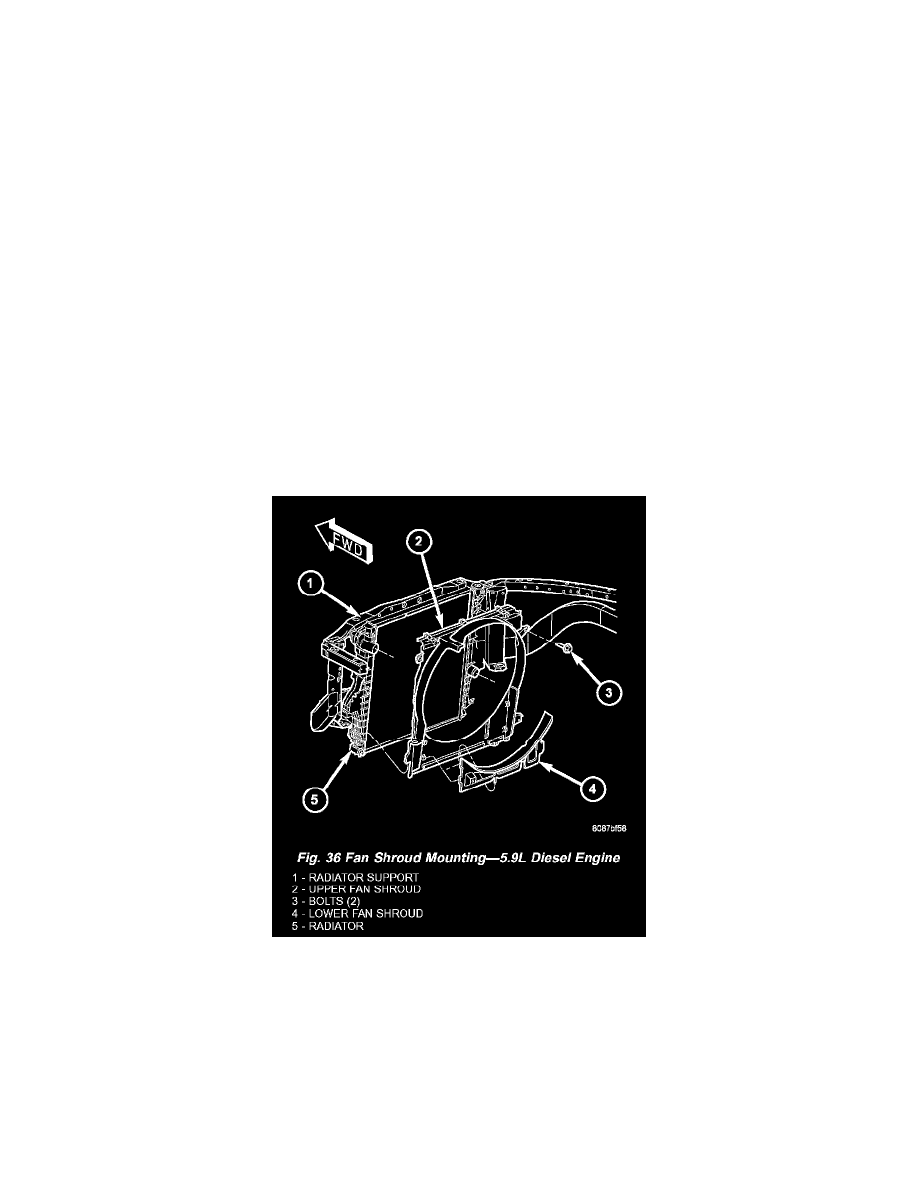RAM 3500 Truck 2WD L6-5.9L DSL Turbo VIN C (2003)

Radiator: Service and Repair
RADIATOR - 5.9L DIESEL
REMOVAL
1. Disconnect both battery negative cables.
WARNING: DO NOT REMOVE THE CYLINDER BLOCK DRAIN PLUGS OR LOOSEN THE RADIATOR DRAINCOCK WITH
THE SYSTEM HOT AND UNDER PRESSURE. SERIOUS BURNS FROM COOLANT CAN OCCUR.
2. Drain the cooling system.
WARNING: CONSTANT TENSION HOSE CLAMPS ARE USED ON MOST COOLING SYSTEM HOSES. WHEN REMOVING OR
INSTALLING, USE ONLY TOOLS DESIGNED FOR SERVICING THIS TYPE OF CLAMP, SUCH AS SPECIAL CLAMP TOOL
(NUMBER 6094). SNAP-ON CLAMP TOOL (NUMBER HPC-20) MAY BE USED FOR LARGER CLAMPS. ALWAYS WEAR
SAFETY GLASSES WHEN SERVICING CONSTANT TENSION CLAMPS.
CAUTION: A number or letter is stamped into the tongue of constant tension clamps. If replacement is necessary, use only an original equipment
clamp with a matching number or letter.
3. Remove air box and turbocharger inlet tube.
4. Remove coolant tank hose, washer bottle hose and the positive battery cable from the fastening clips located on top of the radiator.
5. Remove hose clamps and hoses from radiator.
6. Remove the power steering cooler mounting bolts and position the power steering cooler out of the way.
7. Disconnect the transmission cooler lines at the transmission. The transmission cooler will remain on the radiator and can be removed as an
assembly.
8. Remove the lower shroud assembly and the electronic viscous fan wiring from the upper shroud assembly.
9. Remove the two radiator upper mounting bolts.
10. Lift radiator straight up and out of engine compartment. The bottom of the radiator is equipped with two alignment dowels that fit into holes in the
lower radiator support panel. Rubber biscuits (insulators) are installed to these dowels. Take care not to damage cooling fins or tubes on the
radiator and air conditioning condenser when removing.
CLEANING
Clean radiator fins are necessary for good heat transfer. The radiator and oil cooler fins should be cleaned when an accumulation of debris has
occurred. With the engine cold, apply cold water and compressed air to the back (engine side) of the radiator to flush the radiator and/or oil coolers of
debris.
INSPECTION
